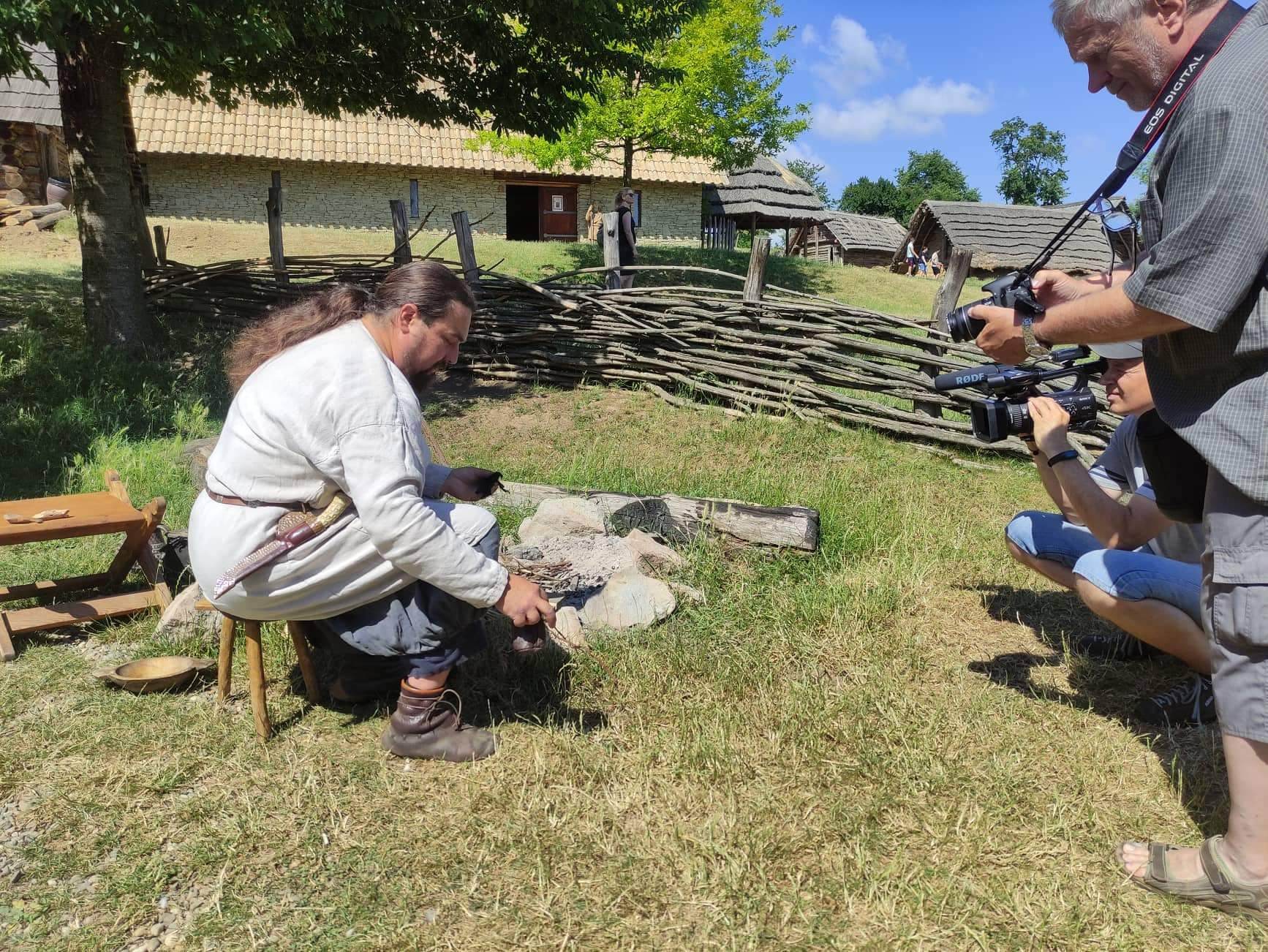- Návody
- 1 likes
- 26714 views
- 0 comments
We won't mention the modern magnesium flint, which has nothing to do with the art of making fire. But if you already have a flint and want to use it, not just wear it as a prop, you need three things. You don't have any of the mandatory equipment of a woodsman or reenactor? Check out our range of armchairs and pouches, and don't forget that we also have chipped flint from the North Sea and Baltic Sea.
To start a fire you need:
A tinder - a metal with a high carbon content. The sparks you see are just tiny shavings of burning metal that you blow off by striking the flint.
You can replace the known flint with, for example, pyrite (the so-called cat's gold gets its name from the word pyros - fire), you can also work with, for example, amethyst crystals and so on. We recommend a claw of a size that is easy to hold, with a sharp edge that you can easily make by smashing the stone with a hammer or other stone.
And finally, a sponge - tinder - the biggest geyser of sparks without the right material, which will burn very quickly, will be just an effect.
Wicks made of natural materials and pieces of tinder wood, dry moss, fluff, dry grass and various crushed and grated types of tallow are well known. These you prepare on the spot, practically from what nature provides. If you are inclined to prepare in advance and not rely on a utopian forest full of dry wood and poplar fluff, prepare in advance.
The most readily available incendiary material is gunpowder. We've tried a tin cigar box. Tightly stuff solid fabric, old jeans, great-grandfather's cloth handkerchiefs or leftover linen into this and at the earliest opportunity place the box on the embers or directly into the fire. The time it takes for the textiles to become a pile of thin black slices is up to your guess, usually around half an hour. The finished powder sticks well with your thumb on top of the flint and sparks fall into it. These immediately start spreading through the black powder like a microscopic forest fire, and next you're putting it in straw or wood fluff.
Pitch wood - look for pine. Ideally a stump or a dying tree trying its best to pump resin into the stump. It is the resin that contains enough turpentine to keep the wood burning great, not damp and burning fast. Such reddish wood, full of bad luck, just scratch with a knife, throw a spark and a fragrant fire is born.
Hoofed Cinquefoil - It's not easy to cut down this hard, hoof-like wood-rotting fungus.
We picked 3 giant pieces for the first time in the woods. Unfortunately, they were old. We spent several hours trying to trim the hard grey crust, then hollowing out the bottom of the hollows. Try to pick a live young one, it will go much better. After removing the unwanted parts, you'll be left with the coveted orange-brown part of the tinderbox resembling rolled glass wool. Hundreds of years ago, you would soak this in urine for weeks and then squash it to saturate the material with ammonia. Water and ash will do for us. Not from washed out ashtrays, but from burnt wood, ideally hardwoods (beech) which make a lovely white ash. By drying the ash-soaked sponge, you create dust 2.0.
You flatten the thin dry part and tear off, just a small piece that sits well in one handful along with the flint. We recommend fluffing the surface of the sponge with a knife a bit to catch the sparks well and dab them into the wood wool. And don't forget to blow air :)

In the summer we were filmed by Prima TV for the show Prima Czechia. We haven't seen it yet and we don't want to look for the footage, so we'll just attach a photo. We don't have the video on our mobile. My fire really burns in an instant and that's why I took the liberty to throw in a few tips from practice.

Comments (0)